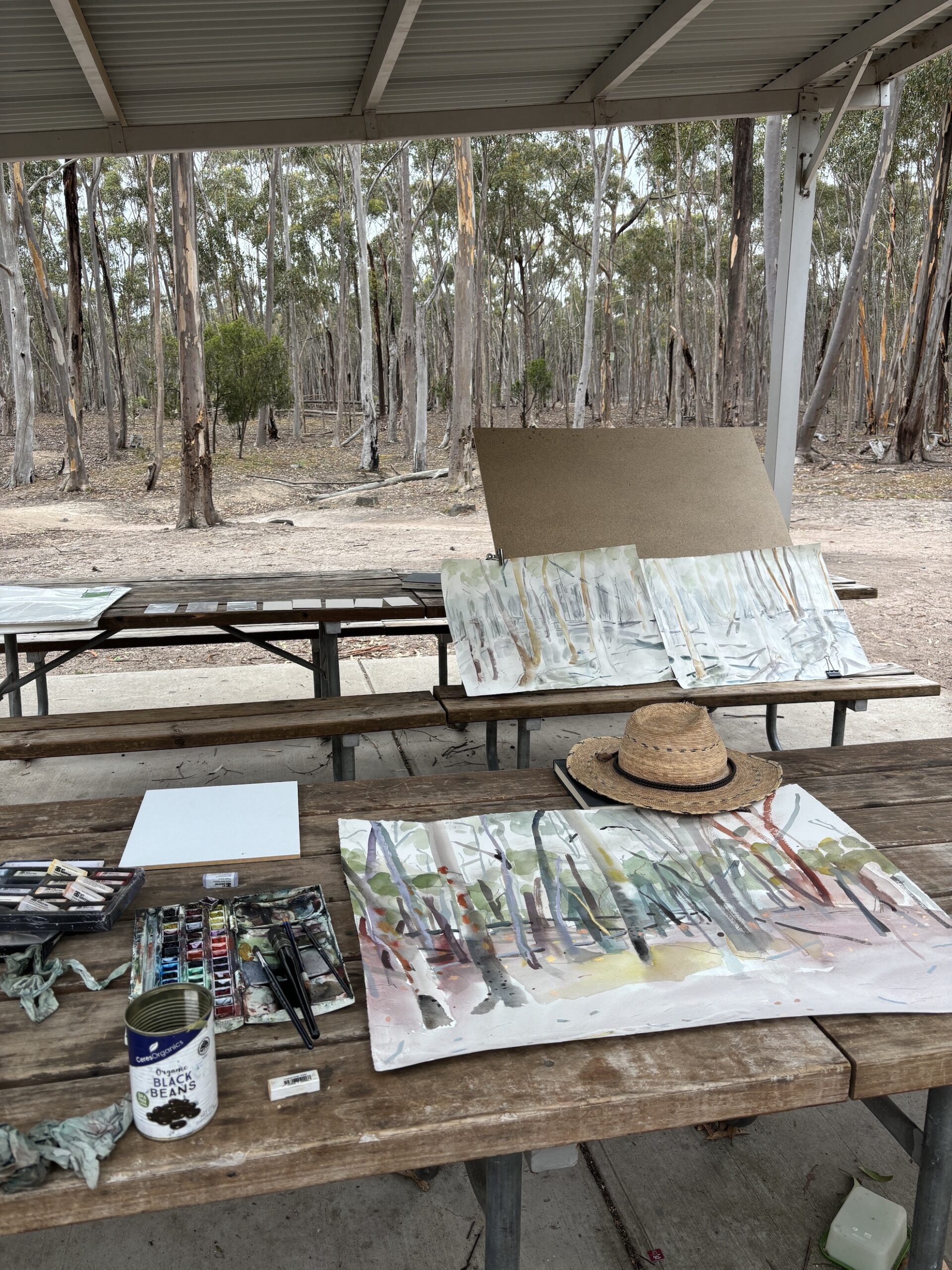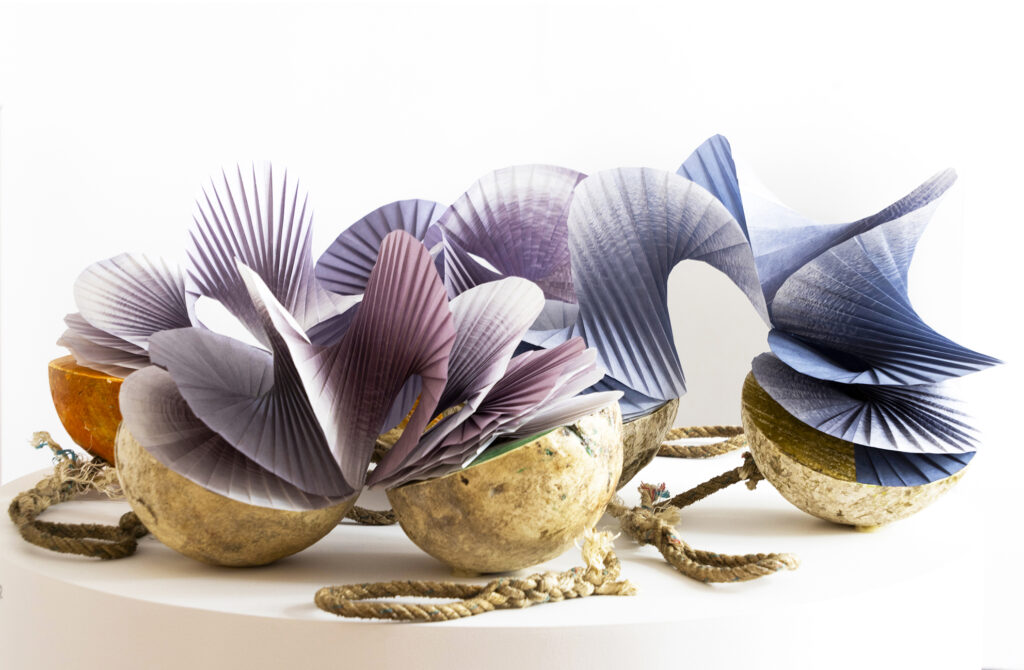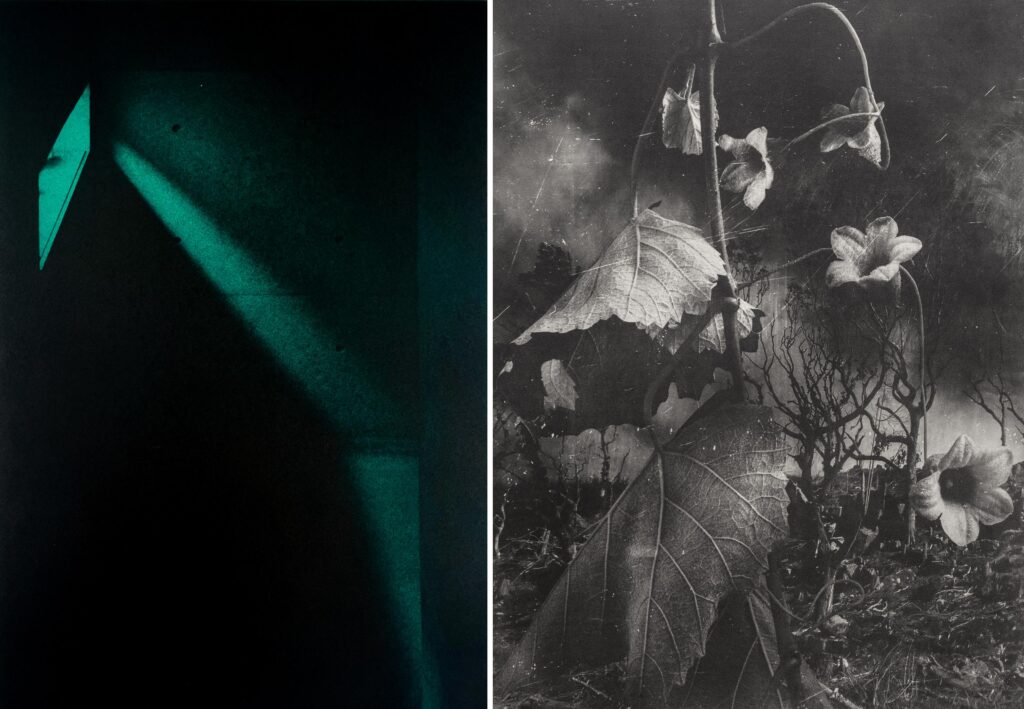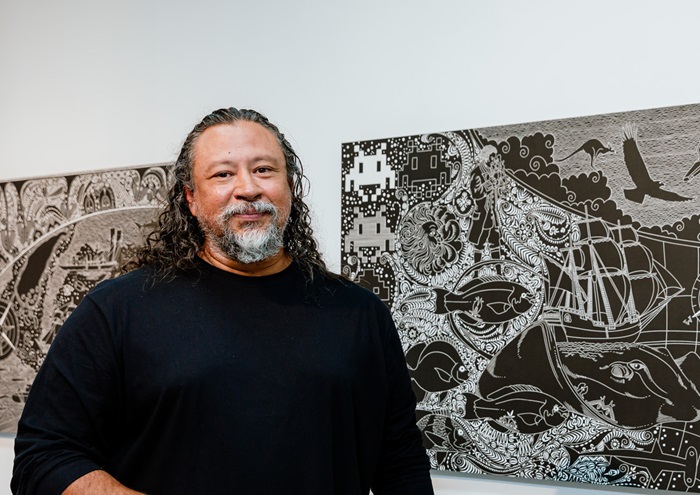Above:
You Yangs Plain Air Studio
Below:
You Yangs A, 2024, a multi-plate etching on steel 56x 76 cm
You Yangs Blue, 2024, pastel and watercolour, gouache 19 x 76 cm
Rock Face (Flinders Peak), 2024, oil on canvas 120 x 120 cm
Sotto No 2 You Yangs (underneath the canopy of trees), 2024, 138 x 149 cm
Landscape Ecco, 2024, watercolour mono print on Aches BFK 56 x 152 cm
All images courtesy of the artist. Photography: Miles Noel, Jo Darvall
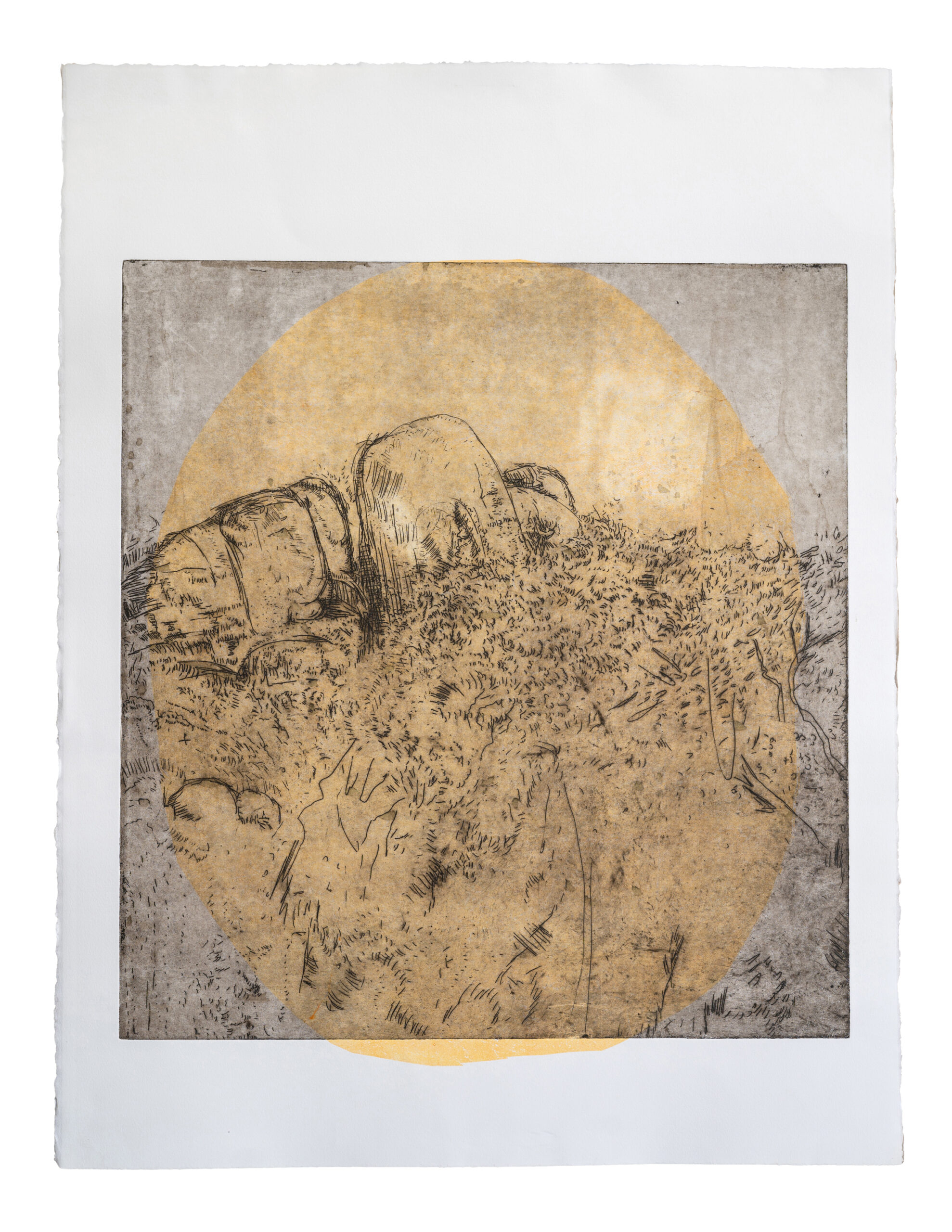

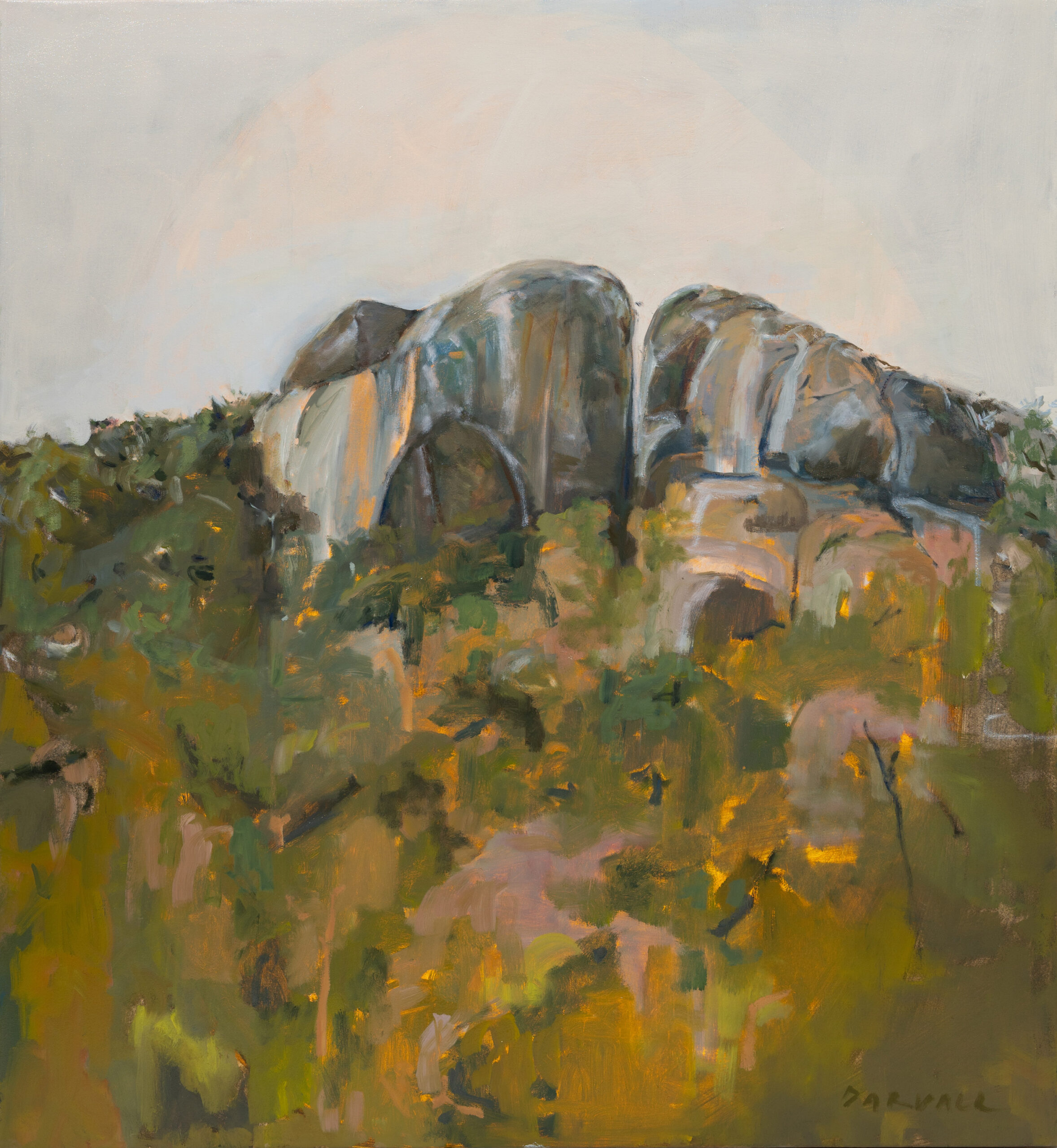
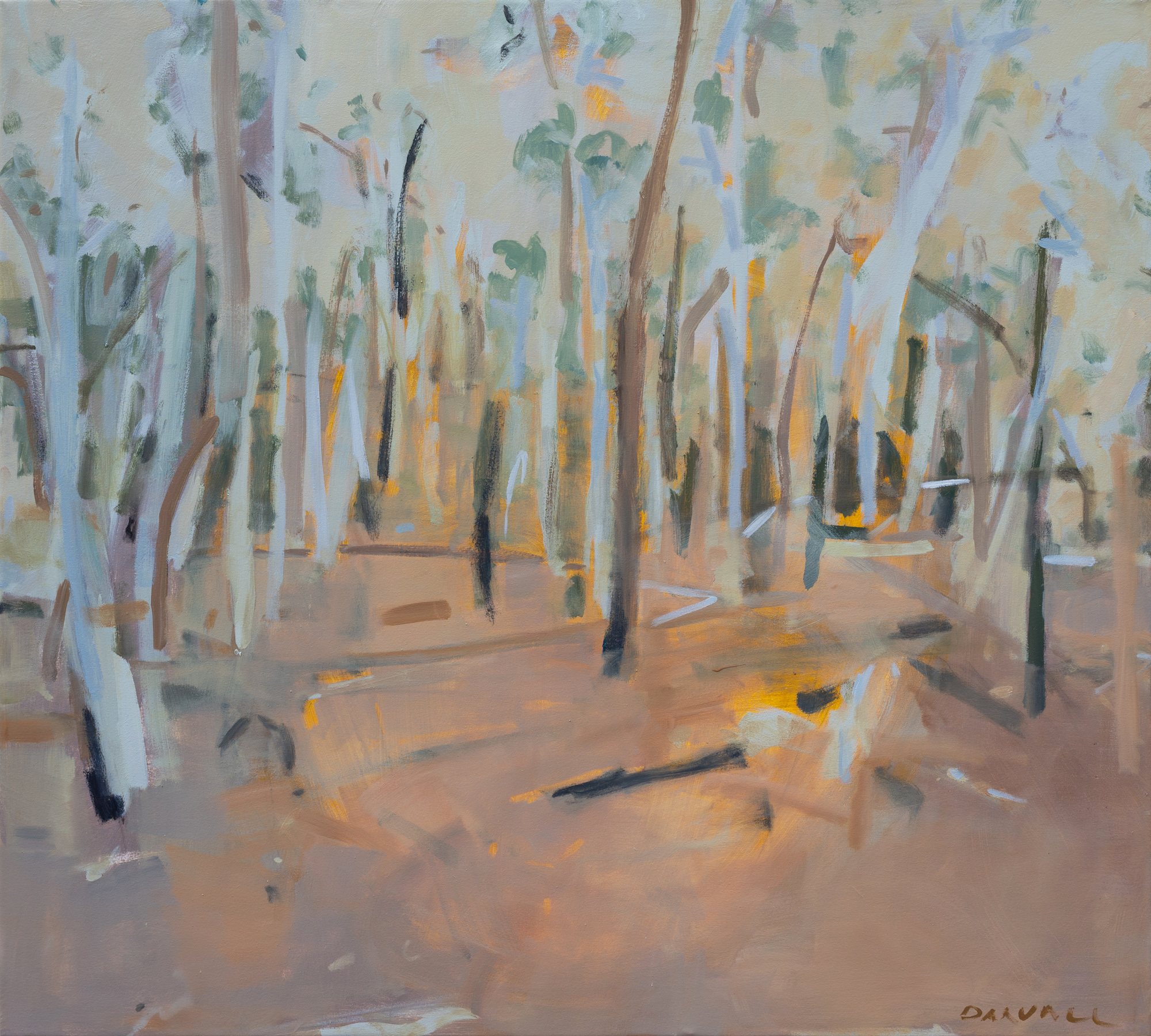
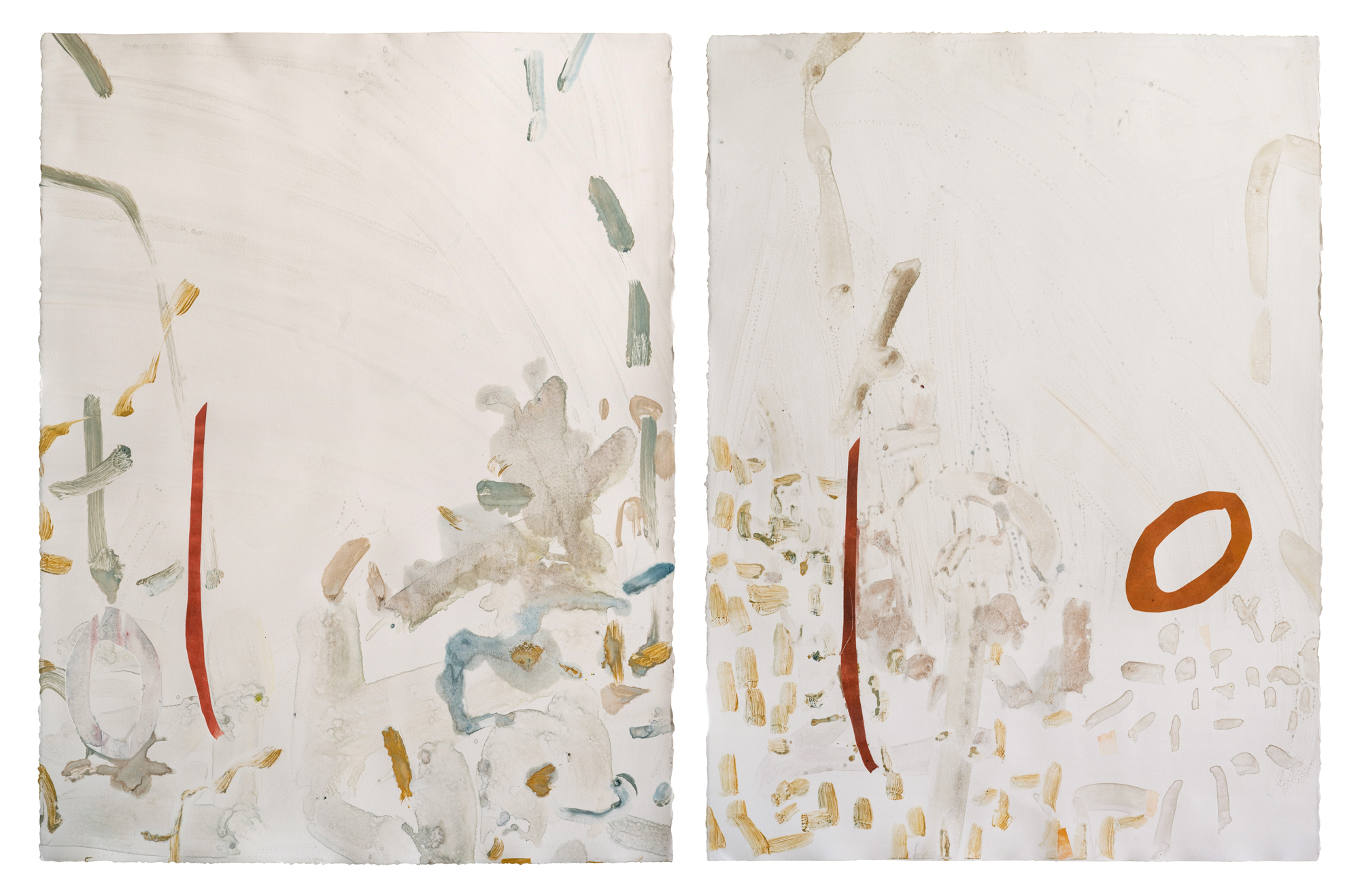
Q: What were some of the foundation ideas for this exhibition project?
Each time I drove past the You Yangs, located twenty minutes west of Melbourne, my desire to record and paint this site intensified. Nostalgic memories from my student days at VCA, particularly a plein air drawing class with Goodwin Bradbeer and Luis Miller, coupled with my ongoing curiosity, drove me to observe the distinctive rugged blue-green mountain outcrop as I traveled west towards the Otways.
The You Yangs range has inspired generations of artists. Who were these artists and why are they inspired by this landscape?
Equipped only with a car, reams of paper, paints, and boards, my destination was Little River, followed by the You Yangs National Park. I established a makeshift studio, and immersed myself in the area. Over several weeks, I produced numerous drawings and watercolours, creating small works on board.
Having contemplated the history and works of art inspired by the surrounding area, to gain a deeper understanding, I arranged a private viewing with Senior Curator Lisa Sullivan at the Geelong Art Gallery archive. She showed me a collection of prints and watercolours by Danila Vassilieff and Fred Williams. While it was exhilarating to view these works, it was also daunting to be in the presence of such remarkable talent.
Perched on rocks, I soon discovered that one could still see the view that greeted the first convict ships heading towards Melbourne—a view unchanged for hundreds of years. Colonisation led to the tragic mass-killing of the original inhabitants, the Wadawurrung. As the colonisers spread across Victoria, further atrocities were committed against men, women, and children. Garry Linnell, a writer based in Geelong, outlines these sad events in his book Buckley’s Chance, detailing the land grab by John Batman, disfigured by syphilis, Foster Fyans (known as “Flogger”) and John Pascoe Fawkner. It’s challenging to navigate this tragic history to create art, so I started where I felt comfortable, in the lower area west of Flinders Peak.
Q: How did the artwork selection take place?
In short, I sought artworks that captured the essence of the place I was inspired by and was looking for significant sites where the traditional custodians, the Wadawurrung, may have lived. As I moved to the area that distinctly resembled the Vassilieff painting, I was interrupted by a gathering of friends with children, fires lit, happy chatter, fetching wood, with lots of laughter. To me, it echoed the lighter history of the place. I hope in some images chosen for the show that I’ve captured that.
I was particularly drawn to the paintings and etchings of Fred Williams from the Geelong Gallery. Initially overwhelmed, I soon realised that Williams’ etchings provided evidence of his newly acquired skills from a residency in the UK. Upon returning to Victoria and settling near the You Yangs, Williams set up an etching press and created his first etchings. These works showcased a variety of new marks, scraped and etched with acid, which were vital discoveries for him, providing a new language of marks. This innovative mark-making technique was later employed in his oil paintings, where the accidental seeping of acid into the plates created twisting and dancing patterns on the surface, defining his iconic style.
Inspired by this, I began working on my steel plates back in Western Australia.
The key motivation in my choices of works, was capturing not just familiar views of the place, but also a journey of sorts through my working processes. It was important to me that the viewer sees the discovery, the ‘play’, the scratches and the resolved paintings together.
Q: How does the exhibition manifest – what do visitors experience?
The You Yangs is the ancient home of the creator spirit Bunjil. I wonder what this mythical creature has in store for us.
I used my practice as a printmaker and painter to create new works that engaged in a type of conversation. Discoveries I noticed in my prints were incorporated into my paintings. Notably, the etching on steel You Yangs A 2024 is embedded in the paper with a golden oval and an etching printed on top. I decided that this golden oval would become the first color layer laid down on the large canvases—sometimes completely painted out and sometimes left visible. It was a fascinating conversation, and I am still working out what it all means.
I want to give space for the viewers to make their own interpretations too.
Q: What are some of the key works and what subject matter do they deal with?
My key works include You Yangs A 2024, a multi-plate etching on steel, where the view climbs the rocky outcrop to the top, encased by a shimmering oval. It is both instantly recognisable and obtuse at the same time.
Rock Face 2024 (Flinders Peak) is a similar exploration using oil paint. The golden oval hovers just behind the rocks, drawing the viewer’s gaze upward.
A key subject is the ancient stories from the Wadawurrung. After some research, these stories provided answers to some of the mysteries of the You Yangs.
Reconciliation, or reconciling our past, became the main subject. The intense rope knot of history needs to be unravelled and untangled here.
Q: What is it about the printmaking experience that you most appreciate?
It was a pleasant discovery to explore how a printmaking practice can complement and enhance the practice of painting. Observing Williams’ use of random marks etched into his plate, which he then used to reinterpret our landscape, underscored the unique and authentic nature of Australian landscape painting. I wanted to further develop my own print language as I find it informs and enriches my watercolour and oil works.
—
Jo Darvall: You Yangs is at Fox Gallery, 63 Wellington St, Collingwood, August 1-31. Opening event: 1 August, 6.30pm. Artist talk: 3 August, 2.30pm
—
Join the PCA and become a member. You’ll get the fine-art quarterly print magazine IMPRINT, free promotion of your exhibitions, discounts on art materials and a range of other exclusive benefits.

